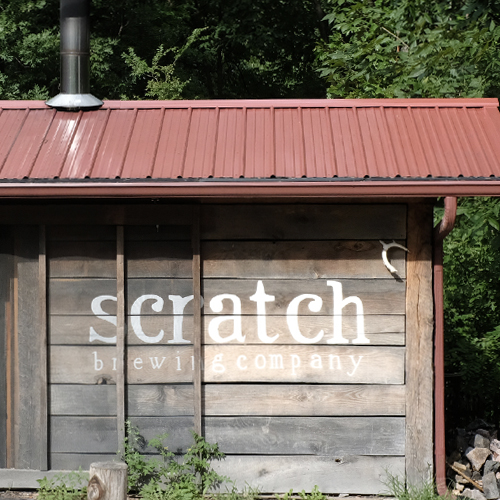If you’ve ever made chicken-and-wild-rice soup, you know that wild rice can be a stubborn grain. It isn’t done until the seed’s hard outer sheath softens and the inner grain cooks through, popping like a blossom.
The name “wild rice” is misleading, given that Midwestern wild rice is actually a cereal, unrelated to Asian rice varieties. The taste is much more similar to buckwheat or bulgur—earthy, vegetal, ideal for baking into bread. Indigenous peoples in the Great Lakes region were the first to harvest it for food. In the centuries since, Minnesotans have found many ways to celebrate their state grain, putting it to use in rib-sticking dishes like wild rice pilaf and chicken-and-wild-rice hotdish.
And they’ve put it in beers, of course—though not as many as you might think, given how Minnesotans love wild rice and the 200-some craft breweries in the Gopher State.
James Page Brewing made a wild rice amber lager in Minneapolis for years. In 2010, New Ulm’s 160-year-old Schell’s made a one-off farmhouse ale with a wild rice backbone, and Northbound Brewpub and Great Waters soon followed. Although received well by locals, all of those beers are now retired.
The name “wild rice” is misleading, given that Midwestern wild rice is actually a cereal, unrelated to Asian rice varieties. The taste is much more similar to buckwheat or bulgur—earthy, vegetal, ideal for baking into bread.
When Jace Marti of Schell’s went to Bell’s Brewery to collaborate on their 2015 Eccentric Ale—another one-off—the brewers spent forty-five minutes cooking large batches of wild rice before pitching it into the mash. A homebrew recipe published in The Growler in 2015 recommends the same.
But you can shortcut the process by milling the grain down. That’s how Eric Biermann, founder and president of Minneapolis’s Inbound BrewCo, preps the adjunct. “If I’m a chef, I want a beautiful single piece of unbroken wild rice, but we basically go in and sweep up all the broken stuff,” Biermann says. “We actually mill it even smaller. Not down to a flour, but we get it so that it can readily absorb the water. That way, we don’t have to worry about it not penetrating that hard shell.”
Former James Page brewmaster Jim Hoeft encouraged Biermann, who grew up eating wild rice in Belgrade, Minnesota, to bring it into his brewery. After years of pressure, Biermann coalesced. But rather than making an amber like James Page’s, he came up with the 7% ABV MN Rice Wild Rice Porter.
Yes, wild rice imbues beer with a pleasant, homey nuttiness, but as with any wild rice recipe, the best results come when you figure out how to complement the flavor. “With pilaf, everyone’s adding mushrooms and other stuff to kind of develop the dish,” Biermann says. “So we took that approach to our porter, where it’s got some nice crystal malts and some Munich malt and some English pale malt all together. Otherwise, you have a very one-dimensional beer.”
Wild rice makes up about 20% of that beer’s mash bill, which means 300 pounds of raw rice per fifteen-barrel batch. Wild rice can be hard to source at that volume, Biermann says. He gets his from Maltwerks, out of Detroit Lakes.
When fellow Minneapolitans Lakes & Legends Brewing made their own wild rice beer in 2016, they worked directly with Spirit Lake Native Farms. Co-founder Derrick Taylor didn’t want the engineered, paddy-grown farmed wild rice often found in stores. The Lakes & Legends team worked directly with Spirit Lake owner Bruce Savage to harvest and kiln all the rice in Wilde Rijst Belgian Brown Ale—a standard brown ale base flavored with hand-picked wild rice and fermented with a spicy Belgian yeast.
“The authentic, hand-harvested stuff, it takes a lot longer to cook, but it’s worth it,” Taylor says. “Some of the stuff that’s been commercialized, they’ve genetically engineered that wild rice so it can cook faster and is easier to use.”
Taylor knew that to do the ingredient justice, he had to work directly with the indigenous people who made manoomin—as the Ojibwe call it—the Minnesota favorite that it is today. Taylor and his team canoed out into Spirit Lake’s crop with Savage, harvesting stalks by hand. Savage even adjusted his roasting process to improve the grain’s brewing efficiency, making Wilde Rijst a true collaboration between a Minneapolis farmhouse brewery and a Native-owned producer.
“The fact that it was genuine, authentic, hand-harvested wild rice was over-the-top,” Taylor says. “We were so excited. There’s a lot of history with the Native American population in Minnesota, and going up there with a respect for their people and where they’ve been, where they are, and where they’re going was really important to us.”
Lakes & Legends only brewed Wilde Rijst twice, the last time in 2017. Inbound pushed MN Rice for three years, reformatting to a more drinker-friendly tallboy in 2019, but Biermann had to skip the beer in 2020 to open up production space for better sellers. New Brighton’s Barley John’s is the last brewery in Minnesota that still sells a widely available wild rice beer, and their future is looking uncertain after they filed for bankruptcy in January.
On December 11, Coon Rapids brewery Alloy Brewing released Great Uncle Steve’s Wild Rice Brown Ale, a beer created by brewer Steve Tschida in honor of his birthday. Though Alloy says they’d like for it to stick around as a regular offering, its first run is limited. And that’s the way it always seems to go.
But these personal connections will keep wild rice beers popping up on taplists, even if they’re hard to brew or don’t sell well in the long term. As long as born-and-raised Gopher Staters are working the brewhouse, they’ll be looking to homespun recipes from their youth and asking themselves, “Hey, I wonder if I can use that in a beer?”




